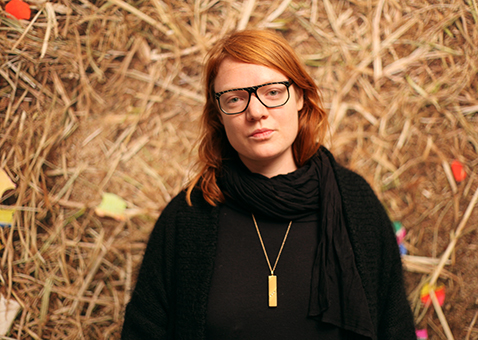wanderlust
History X-Berg: How Kreuzberg Got Hip

Like Greenwich Village in New York City, Kreuzberg holds a special place in the heart of Berlin as a culture center. I clearly remember when I arrived there for the first time: it was early September so the street was filled with people enjoying beers outside of Spätkaufs, gutterpunks walking their dogs, and musicians playing guitars all surrounded by architecture blanketed with graffiti. Over the span of a few months I have spent most of my time in this district with studio visits on Oranienstrasse, meetings in bars on Skalitzer, concerts at Festsaal Kreuzberg and a residency off the Kottbusser Tor stop.
Today when I’m headed to galleries like BAPs favorite KWADRAT or a personal best-loved Exile I feel like I’m returning to my second home in Berlin. As I’ve continued to visit this district, I’ve become increasingly fascinated by the fruitful history of Kreuzberg, both as an integral piece of the greater Berlin puzzle as well as an art world melting pot. So sit back, sip on your Club Maté and bite into your Turkish Döner as I now tell you the story of X-Berg.
A Long, LONG Time Ago
Kreuzberg's roots trace back to the architect Karl Friedrich Schinkel who helped inaugurate its center, Victoria Park. The park, which has had notable Kreuzbergian alums like philosopher George Friedrich Hegel, was the home of a 66-meter high hill nicknamed Kreuzberg (literally Cross hill) after the Iron Cross. Throughout the 19th century, the area didn’t see much expansion until the industrialization era of the 1860s, which would change the face of Berlin forever. The real history of Kreuzberg as an artistic haven, however, starts much later.

In the middle of the 20th century, while Germany was still picking itself up after two World Wars, an influx of both West German citizens and Turks flocked to the center of Berlin. There were two reasons why this occurred: for the Turks (who now occupy more than 30% of Kreuzberg’s population), the move was an opportunity to work and live in a cheap European neighborhood. For the West Germans, however, through a loophole in the law they could move to Berlin and be exempt from Germany’s mandatory military service. Naturally this attracted artists, punks, and musicians to this inexpensive neighborhood.
Famous Alumni of X-Berg
Out of this group of counterculture youths were krautrock titans Zodiak Free Arts Lab who based their studios along the north bank of the Landwehr Canal in Kreuzberg. Performance artist Ulay also brought attention to this area when he stole a painting from the Neue Nationalgalerie and hung it in a Turkish immigrant’s home in Kreuzberg. Likewise Iggy Pop and David Bowie frequented music venue SO36 (briefly managed by artist/legend Martin Kippenberger) on Oranienstrasse when they lived in the city.

After the Berlin Wall fell, Kreuzberg found itself in the center of Berlin once again. Rent prices, however, remained low while growth naturally resumed. Bookstores, music clubs, cafés and art galleries opened up all over X-Berg throughout the 90’s. Institutions like the internationally renowned artist residency Künstlerhaus Bethanien attracted more artists to call Berlin home. Perhaps, however, one of the most important contemporary catalysts for Berlin’s status as an art capital has been its mayor Klaus Wowereit. Calling the city “poor but sexy” after he was elected into office, he has gained praise for improving funding for the arts in Berlin as well as making it easy for artists outside of Germany to get visas for practicing their art here.
A Contemporary Arts Utopia
Today the Galleries Association of Berlin lists over 440 galleries in the entire city. With multiple thousand artists from around the world showing in more than 57,000 square meters of exhibition space (the equivalent of 88 Central Parks!), Berlin is without a doubt a force to be reckoned with. The spark that lit the flame, however, is without question Kreuzberg. Despite the fact that blue chip galleries have opened their ivory spaces in posh neighborhoods like Mitte, their roots are buried in the streets of Kreuzberg. Galleries like Chert, MindPirates, The WYE and others have kept the motivating force behind this neighborhood alive. Although the ghost of Hegel and Schinkel still haunt the blocks of X-Berg, it’s the spirits of the of artistic youth that trailblazed central Berlin nearly 50 years ago that made this city the beacon for artists that it is today.

Article by James Shaeffer
Editor's note: This article originally appeared on Artparasites in January, 2013. You came for the history, now stay for the art –check out these other great stories:
Are Classic Paintings Doomed To Be Internet Jokes?
The Unbearable Lightness Of Being
Be the first to write a comment.
Your feedback
